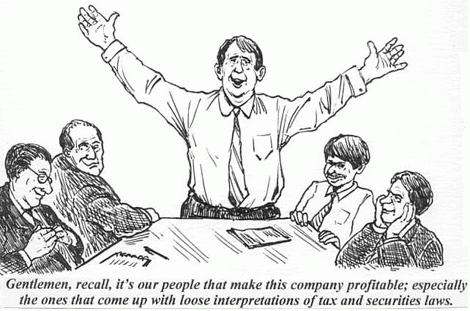The Cycle
Business operates in a cycle. Like so many other things in the natural world, once a business entity starts, it continues to loop through a known cycle. Understanding this cycle is fundamental.
What starts a cycle is an asset. Assets are easy to understand because they are nothing more than things and stuff. All businesses have assets. Without assets, the business cannot exist as a going concern.
A business uses its assets to create revenue. The business can sell assets as an inventory, or it can use assets, like machines, to change another asset (raw material), into finished goods. Then the business can sell the finished goods. Revenues are sales of either goods or services. Even in a purely service-oriented profession, such as psychology or law, assets are involved in the form of a couch for the psychologist or a conference room for the attorney.
Businesses have expenses. Cash is used to pay expenses. Expenses provide resources, like energy, labor, and outside consulting services.
Revenue - expenses = earnings, sometimes called profits. If revenue is greater than expenses, typically it is said, “the company made a profit.” If expenses are greater than revenue, it is said, "the company operated at a loss." A word of warning is needed here. Positive earnings—profit—are an opinion, a theory. Profit is a misleading term, as we will discuss later, and a company can report a profit and still go bankrupt.
A company that makes enough earnings to offset the cash outlay for expenses generates operating cash. That operating cash flows back as an asset and the cycle starts over again.
It is amateurish to say that the purpose of a business is to generate profit. The success of a business is dependent upon its ability to generate more operating cash than it consumes. Businesses consume cash in the payment of expenses. Businesses also consume cash in the acquisition of other assets, such as plants, equipment, and inventory. There are times when a business may show positive earnings but actually create a cash loss because more cash left the business than came in. This sometimes happens with growing businesses, where the business leaders are investing in more assets and resource activities to increase revenue. It also happens with businesses that are sick, weak, and fading.
Cash is the oxygen a business enterprise needs to survive.
Some spectacular business failures happened in the first decade of the 21st century. These businesses reported incredible profits but still ended up bankrupt. Enron did it by fraudulently selling assets to entities that were not on its balance sheet, in essence selling its own asset back to itself, creating an illusion of great revenue and strong profit but in reality, no cash. MCI WorldCom demonstrated fabulous revenue and strong earnings by reporting expenses paid for services as assets. Both of these are examples of fraud.

The housing bubble and credit crisis created other spectacular failures or last-minute rescues. Lehman Brothers was very profitable, but they held assets from worthless investments. When it came time for Lehman to come up with the cash to pay off investor collection demands, Lehman’s cash well ran dry. Wachovia, Merrill Lynch, and a host of other banks found themselves in the same illiquid position and had no cash to pay the bills. Every single one of these companies reported fabulous earnings prior to their liquidity crisis.
Companies must budget cash flows in order to operate. Liquidity, solvency, and cash flow are fundamentally related. Managers should view these three factors as a composite and not as components.
Liquidity refers to a company's ability to pay its short-term obligations. Solvency relates to the company's ability to meet its long-term commitments. Cash flow is the river of cash as it flows through the business plumbing.
Supply chain managers have an impact on all three of these components. Mistakes in inventory allocation can tie up cash assets in illiquid inventory, placing the business in jeopardy of being unable to meet its current obligations, i.e., paying the bills. Making unneeded investments in plants and equipment or failing to liquidate unused fixed assets like equipment can place a company in a position of insolvency. A company's failure to properly execute its supply chain can impede or retard the flow of cash. An example: excessive backorders to customers who have a ship-complete policy, meaning the customer will not pay the invoice until the entire order is delivered.
Understanding the cycle is fundamental. Knowing the components and how they are related is necessary if one is to be able to speak the language of business. What part of the business operations cycle do you work within? Are you in sales, creating revenue? Are you in administration, manufacturing, or distribution, creating expenses? Do you manage the assets, like inventory or accounts receivable? How do you affect your company's earnings?


